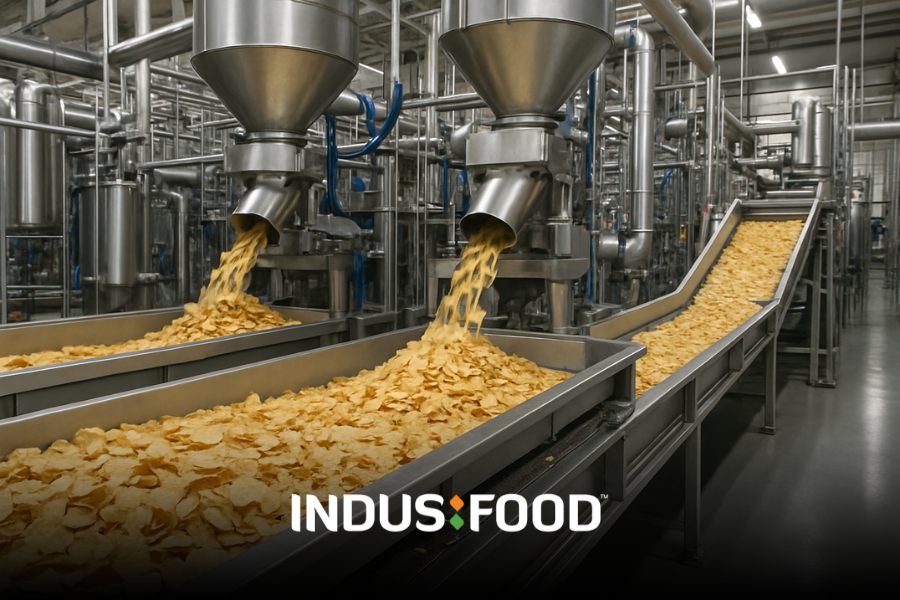
Indian Food Manufacturing industry is charting a remarkable growth trajectory, emerging as a global leader backed by strong agricultural roots, supportive government policies, and rising domestic and international demand. As of 2024, India is among the top global producers of milk, eggs, spices, vegetables, and meat, with the sector contributing nearly 13% to the GDP. Government schemes like PLISFPI and PMKSY have boosted investment and exports, while key players—both domestic and global—are expanding their footprint. Despite challenges, India’s focus on innovation, infrastructure, and high-value exports positions it to become a powerhouse in global food production and trade.
India has emerged as a global powerhouse in food production and processing, leveraging its vast agricultural base, supportive policies, and expanding domestic and international markets. As of 2024, India ranks among the top food-producing nations, leading globally in the production of milk, eggs, and spices, and holding the second position in vegetables, fruits, and meat. The country’s food processing sector contributes nearly 13% to its GDP and is projected to grow at a compound annual growth rate (CAGR) of 15%, reaching US$ 535 billion by 2025-26.
Government initiatives have played a pivotal role in this growth trajectory. Programs like the Production Linked Incentive Scheme for Food Processing Industries (PLISFPI) and the ‘Nivesh Bandhu’ investor portal have attracted significant foreign direct investment, with global giants like Nestlé, PepsiCo, and Coca-Cola expanding their operations in India. Furthermore, India has set an ambitious target to double its agricultural exports to US$ 100 billion by 2030, up from US$ 48.15 billion in 2023-24.
The sector also plays a crucial role in employment, providing jobs to nearly 2 million workers across 37,468 registered food processing units. With a young and growing population—over 65% under the age of 35 the domestic demand for processed and packaged foods is set to rise, especially in Tier II and III cities. This demographic trend, coupled with India’s robust agricultural output, positions the country to enhance its global leadership in food manufacturing and processing in the coming years.
India’s food manufacturing Industry is experiencing robust growth, driven by increasing consumer demand, supportive government policies, and expanding export markets. In 2024, the industry reached a valuation of US$ 367.4 billion and is projected to grow at a compound annual growth rate (CAGR) of 8.38%, aiming to reach US$ 785.4 billion by 2033.
India’s food exports have demonstrated resilience and adaptability in recent years, solidifying the nation’s position as a significant player in the global agri-food market. In the fiscal year 2023-24, India’s agricultural and processed food exports reached approximately US$ 46.4 billion, with processed food products accounting for US$ 10.88 billion, representing 23.4% of the total agri-food exports.
The India’s processed food export sector has seen notable growth, with exports increasing from 13.7% of agri-food exports in 2014-15 to 23.4% in 2023-24. Key export items include cereal preparations (US$ 841.79 million), groundnuts (US$ 860.73 million), processed vegetables (US$ 787.28 million), and processed fruits, juices, and nuts (US$ 682.58 million).
Despite challenges such as export restrictions on staples like wheat and sugar, which led to a decline in overall agricultural exports from US$ 53.2 billion in 2022-23 to US$ 48.8 billion in 2023-24 , India has diversified its export portfolio. The country has focused on expanding exports of high-value processed foods, fruits, vegetables, and oilseeds to markets in the United States and Europe.
Government initiatives like the Production Linked Incentive Scheme for Food Processing Industries (PLISFPI) and the Pradhan Mantri Kisan Sampada Yojana (PMKSY) have played a pivotal role in boosting the sector. As of October 2024, 1,079 projects under PMKSY have been completed, and 171 applications approved under PLISFPI, with beneficiaries investing US$ 1.07 billion and receiving US$ 130.6 million in incentives.
India aims to double its agricultural exports to US$ 100 billion by 2030, leveraging its robust food processing infrastructure and strategic trade policies. This ambitious goal underscores India’s commitment to enhancing its global footprint in the agri-food sector.
The sector comprises a mix of domestic and international companies. Prominent Indian firms include Amul, ITC Limited, Parle, Dabur, and Haldiram’s, while global giants like Nestlé, PepsiCo, Coca-Cola, and Unilever have established significant operations in India. These companies are expanding their presence to capitalize on India’s growing consumer base.
Despite the growth, the industry faces several challenges:
The sector presents numerous opportunities:
In conclusion, while India’s food manufacturing sector faces challenges, strategic investments, policy support, and market expansion efforts position it for sustained growth and increased global competitiveness.
Read more :
© Trade Promotion Council of India. All Rights Reserved.